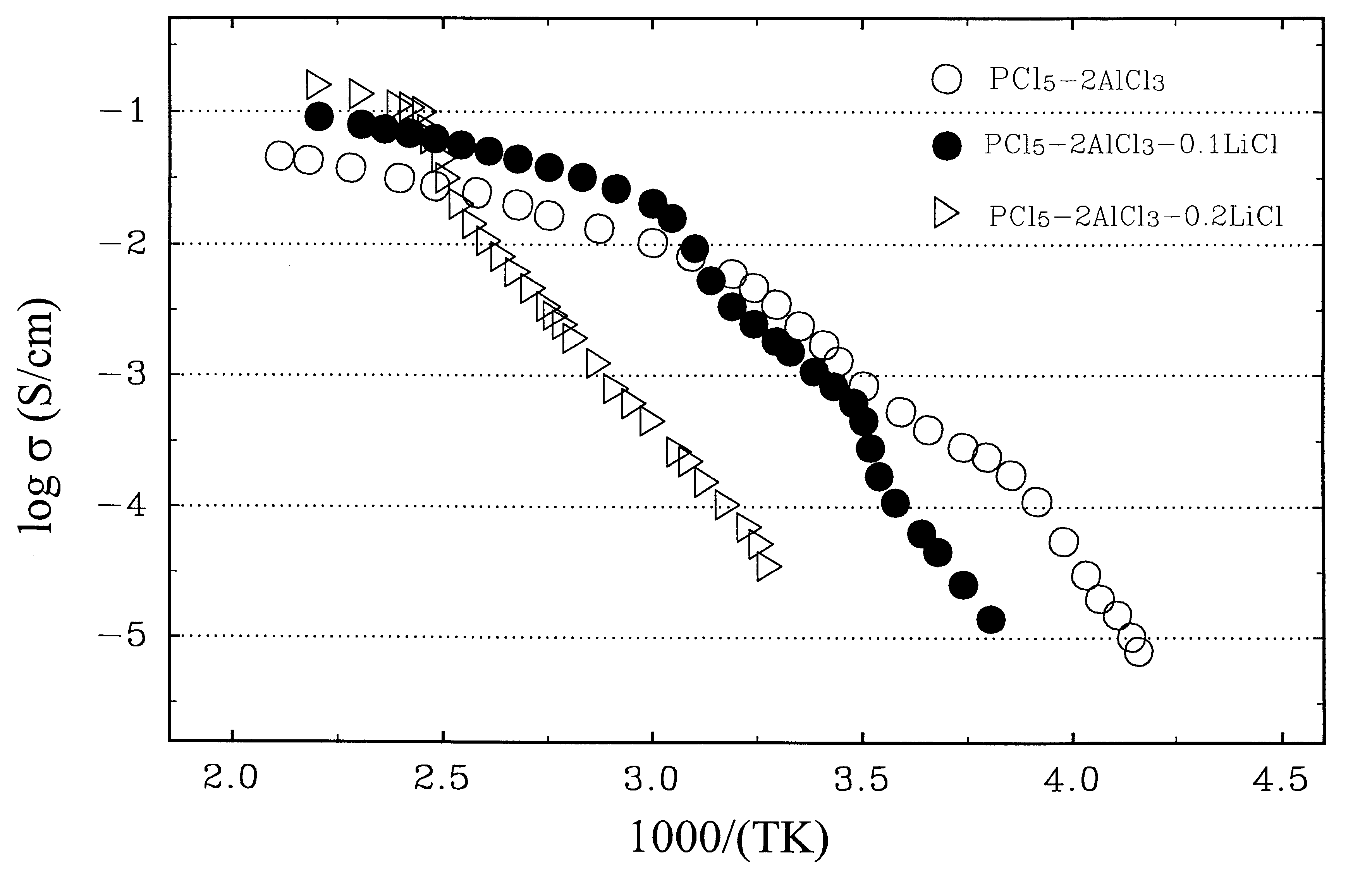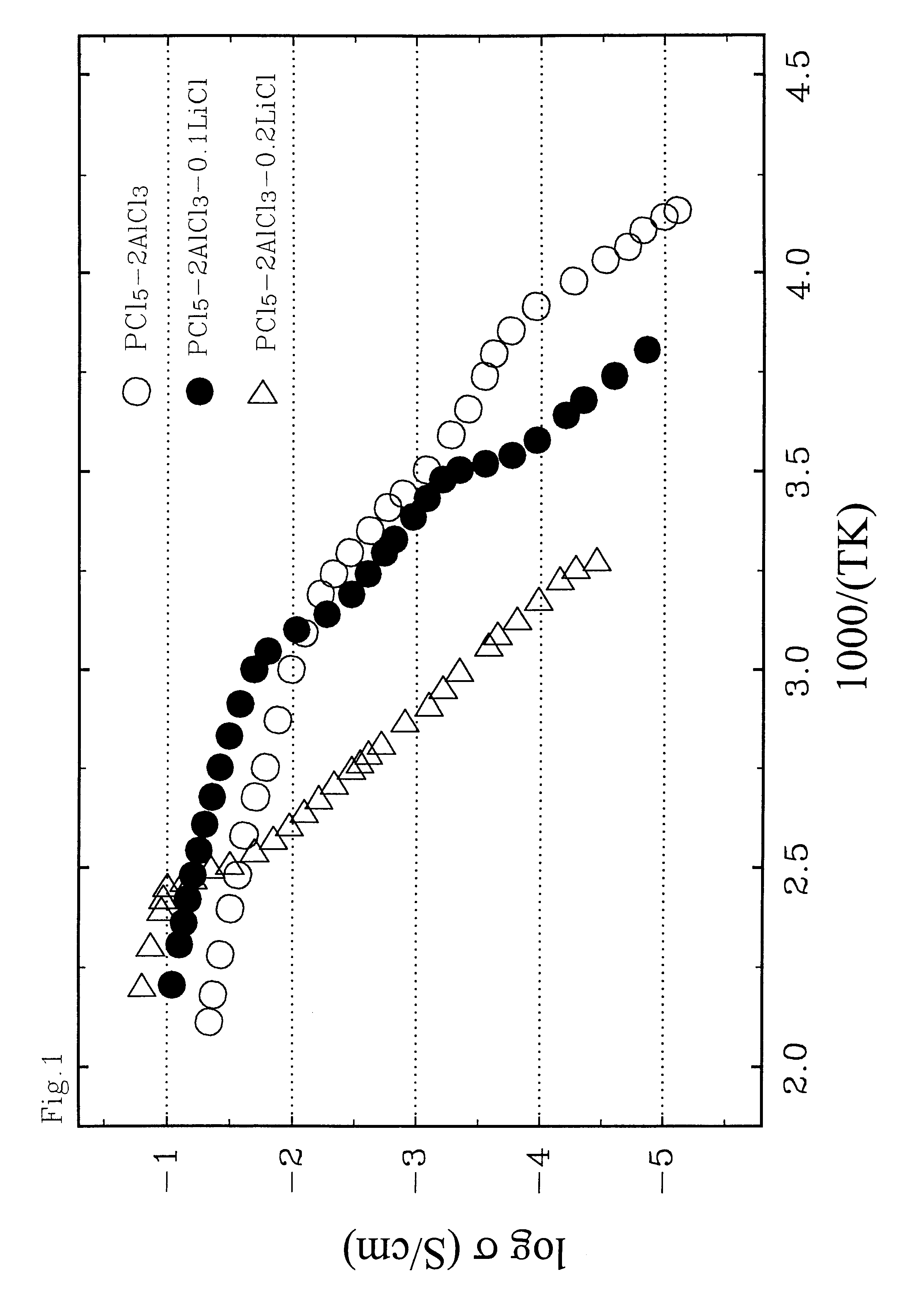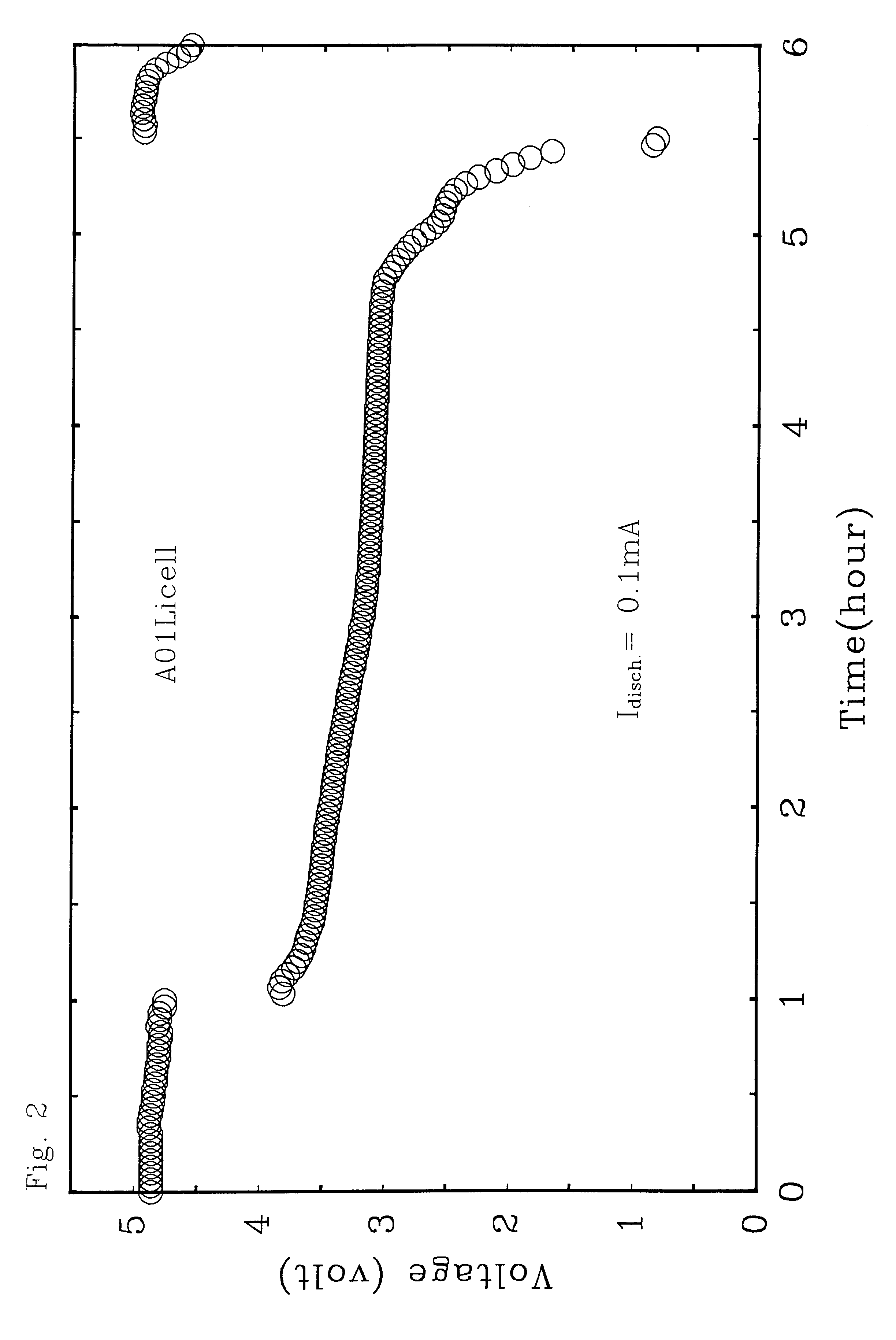Ambient temperature, rechargeable cells with metal salt-based electrodes and a system of cell component materials for use therein
a technology of metal salt-based electrodes and ambient temperature, which is applied in the direction of cell components, non-aqueous electrolyte cells, cell components, etc., can solve the problems of low specific energy, low specific energy, and insufficient development of lithium metal anodes and li-ion cells for large-scale commercial use of electric vehicle batteries
- Summary
- Abstract
- Description
- Claims
- Application Information
AI Technical Summary
Benefits of technology
Problems solved by technology
Method used
Image
Examples
example # 2
EXAMPLE #2
For the cells of this Example, the anode consists of a salt mixture, xLiCl+(1-x)CaCl.sub.2, where 0.2<x<0.5. The cathode consists of a salt mixture, xLiF+(1-x)CaCl.sub.2, where 0.5<x<0.8. Both electrodes are supported on carbon substrates reinforced with nickel metal. The electrolyte solvent consist of a 1:1 mixture of AlCl.sub.3 and PCl.sub.5 in which PCl.sub.3 is present at saturation; this liquid has the nominal composition, AlCl.sub.3 -PCl.sub.5 -0.3 PCl.sub.3. To impart a high Li.sup.+ ionic conductivity to the electrolyte, LiAlCl.sub.4 is added at a concentration of about 10 m %, and LiF is also added at a concentration of about 1 m %. The fabrication procedures and performance characteristics of two representative cells (denoted A and B) using this family of cell component materials are given below.
A. Anode (0.02 g): 0.2 LiCl-0.8 CaCl.sub.2
Cathode (0.035 g): 0.6 LiF-0.4 CaCl.sub.2
Substrate: Carbon-on-nickel
Electrolyte (in excess): AlCl.sub.3 -PCl.sub.3 -0.3 PCl.sub....
example # 3
EXAMPLE #3
For the cells of this Example, the anode consists of a salt mixture, xLiCl+(1-x)CaCl.sub.2, where 0.2<x<0.5. The cathode consists of a salt mixture, xLiBr+(1-x)CaCl.sub.2, where 0.5<x<0.9. Both electrodes are supported on carbon substrates reinforced with nickel metal. The electrolyte solvent may consist of any composition within the room temperature liquid phase region of the AlCl.sub.3 -PCl.sub.5 -PCl.sub.3 ternary. To impart a high Li.sup.+ ionic conductivity to the electrolyte, LiAlCl.sub.4 is added at a concentration of about 10 m %. The fabrication procedures and performance characteristics of one representative cell (denoted A) using this family of cell component materials are given below.
A. Anode (0.02 g): 0.2 LiCl-0.8 CaCl.sub.2
Cathode (0.035 g): 0.9 LiBr-0.1 CaCl.sub.2
Substrate: Carbon-on-nickel
Electrolyte (in excess): AlCl.sub.3 -PCl.sub.5 -0.3 PCl.sub.3 -0.1 LiAlCl.sub.4
Size: 4.times.10 mm
For this cell, carbon-on-nickel substrates, 4.times.10 mm, Type I (wound ...
example # 4
EXAMPLE #4
For the cells of this Example, the anode consists of a salt mixture, xLiCl+(1-x)CaCl.sub.2, where 0.2<x<0.95. The cathode consists of a salt mixture, xLiCl+(1-x)CaCl.sub.2, where 0.5<x<0.95. Both electrodes are supported on carbon substrates reinforced with either nickel or platinum. The electrolyte consists of either (1) xLiAlCl.sub.4 +(1-x) SOCl.sub.2 or (2) xLiAlCl.sub.4 +(1-x)SO.sub.2 Cl.sub.2 where for both electrolytes, x may range from about 0.02 to 1.5. The fabrication procedures and performance characteristics of eight representative cells (denoted A through H) using this family of cell component materials are given below.
A. Anode (0.0025 g): 0.2 LiCl-0.8 CaCl.sub.2
Cathode (0.0025 g): 0.9 LiCl-0.1 CaCl.sub.2
Substrate: Carbon-on-platinum
Electrolyte (0.004 g): SOCl.sub.2 -0.035 LiAlCl.sub.4
Size: 2.times.6 mm
For this cell, the carbon-on-nickel substrates were prepared from start to finish using the same materials and procedures as those of the carbon-on-nickel substr...
PUM
 Login to View More
Login to View More Abstract
Description
Claims
Application Information
 Login to View More
Login to View More - R&D
- Intellectual Property
- Life Sciences
- Materials
- Tech Scout
- Unparalleled Data Quality
- Higher Quality Content
- 60% Fewer Hallucinations
Browse by: Latest US Patents, China's latest patents, Technical Efficacy Thesaurus, Application Domain, Technology Topic, Popular Technical Reports.
© 2025 PatSnap. All rights reserved.Legal|Privacy policy|Modern Slavery Act Transparency Statement|Sitemap|About US| Contact US: help@patsnap.com



